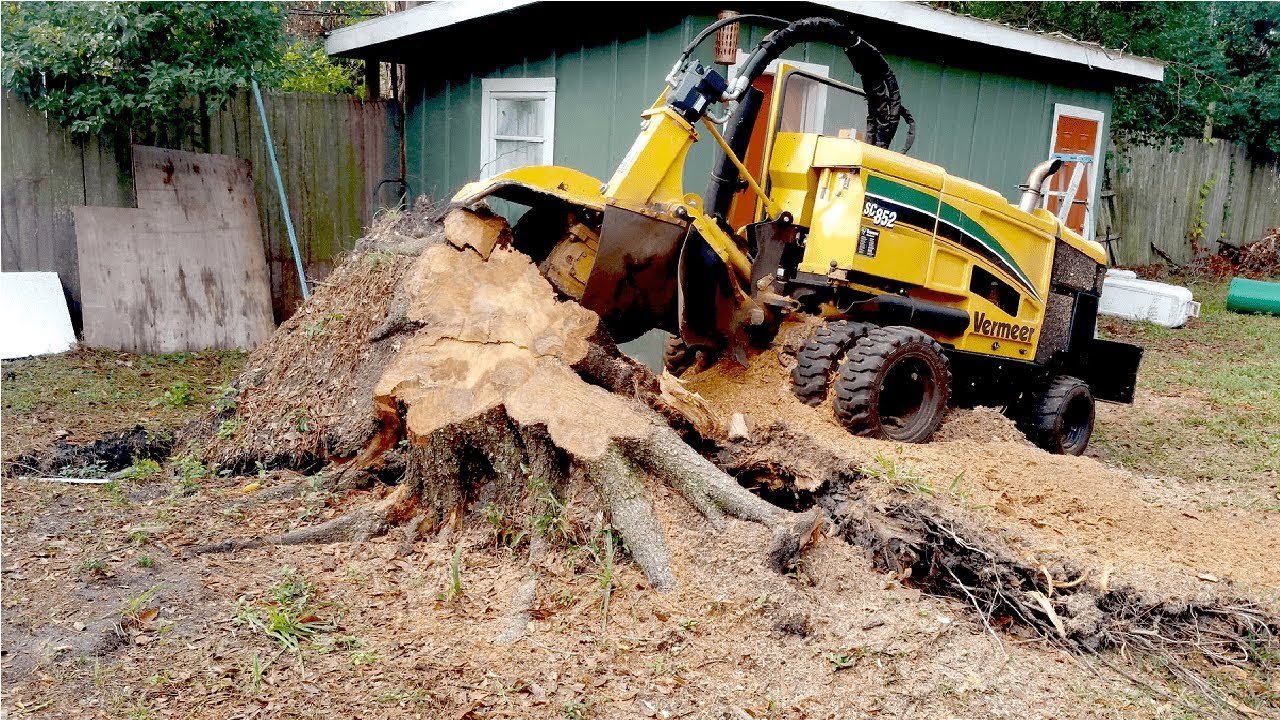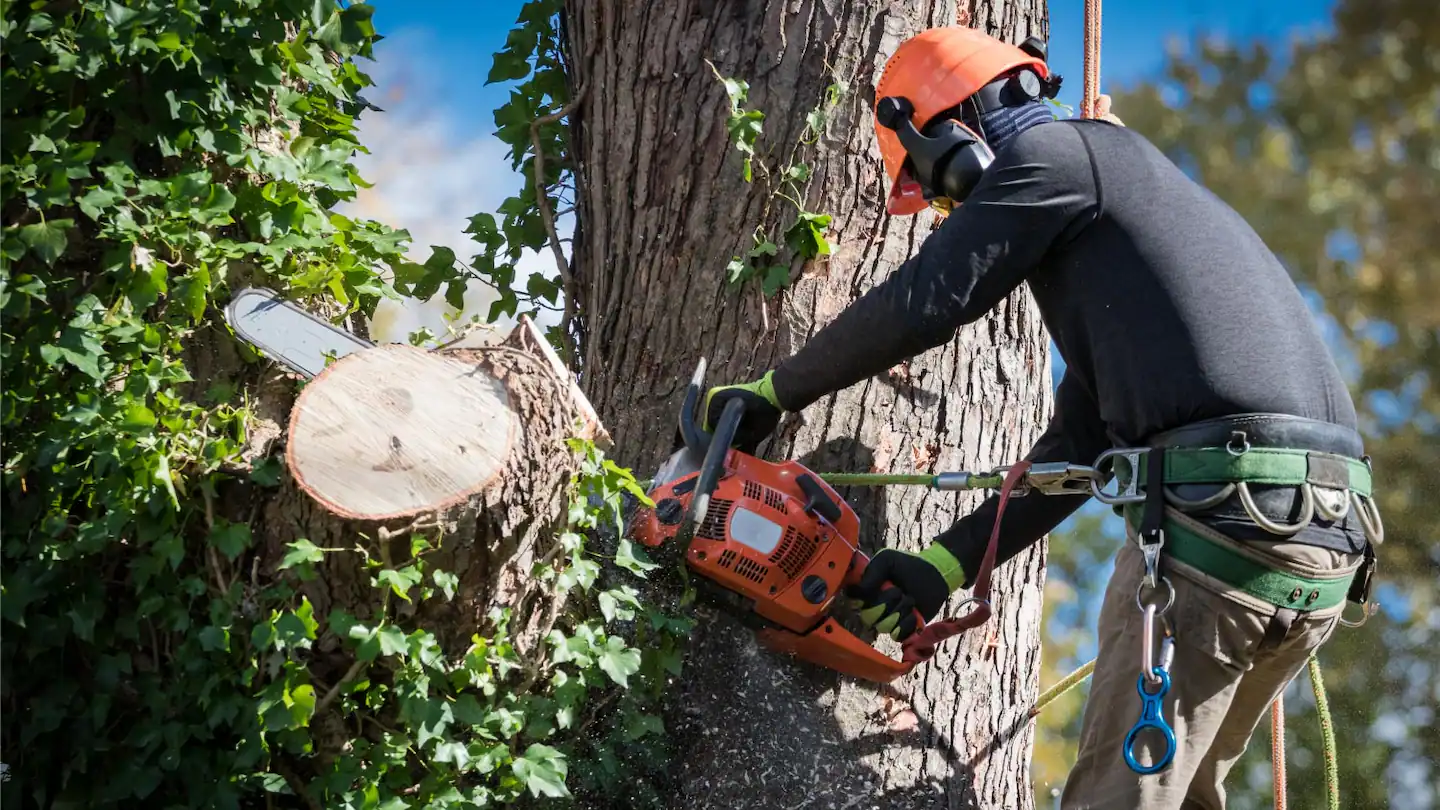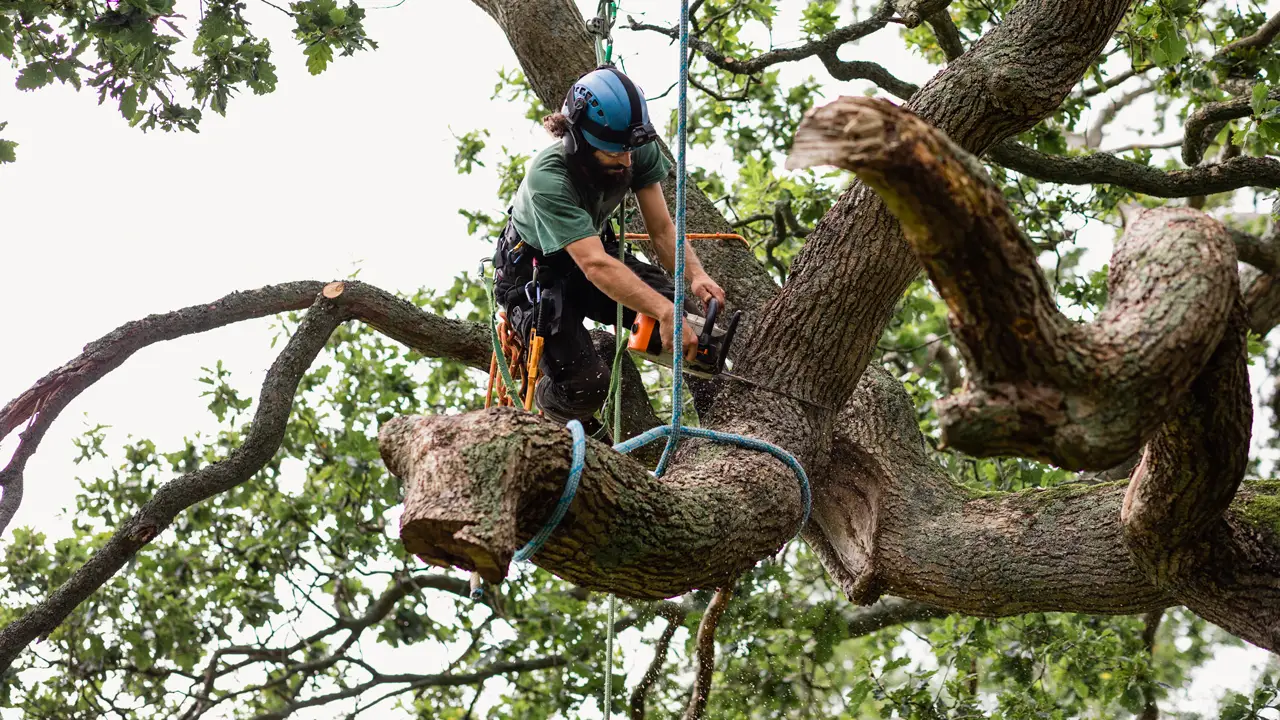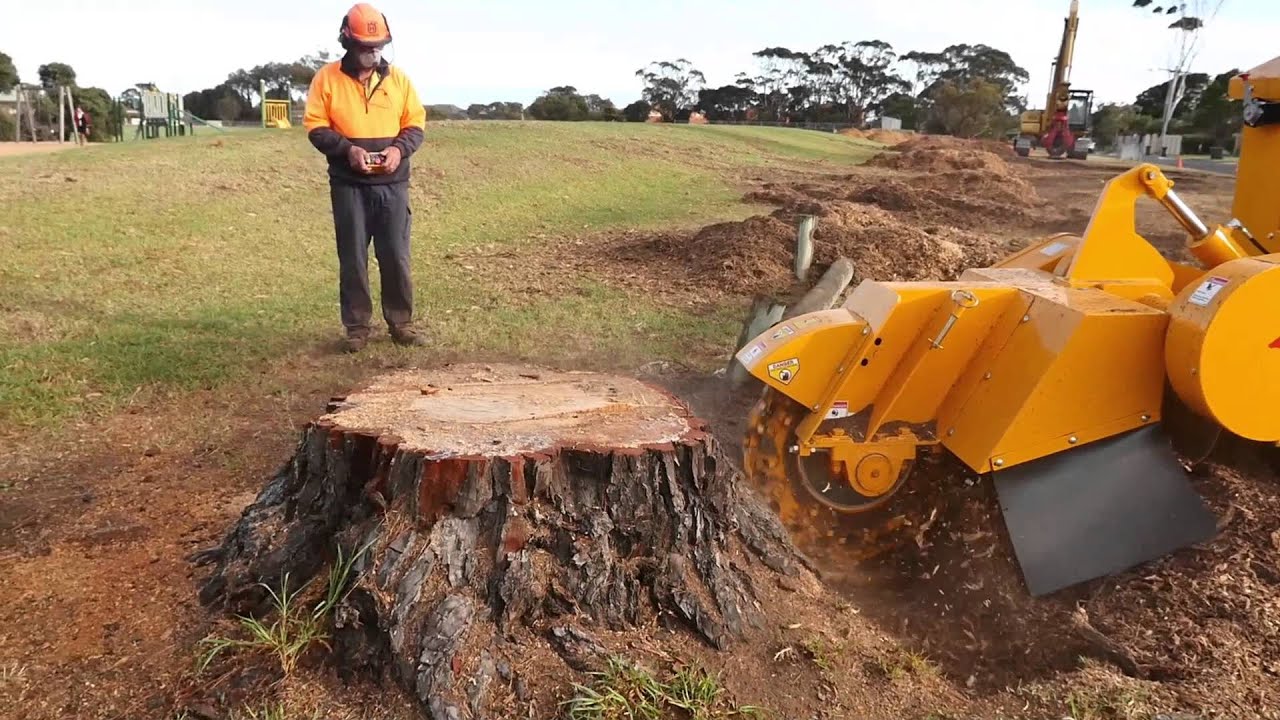Trees play an essential role in our environment, providing shade, oxygen, and beauty to our surroundings. However, there are times when tree removal becomes necessary, leaving behind unsightly tree stumps that can be a hazard or an eyesore. In such cases, tree stump grinding is a highly effective solution for removing these remnants.
In this article, we will explore the process of grinding large tree stumps, the necessary equipment, safety measures, and post-grinding procedures. We will also discuss potential challenges and when it may be best to seek professional help.
Understanding the Basics of Tree Stump Grinding
Tree stump grinding is the process of mechanically removing tree stumps by utilizing specialized equipment known as stump grinders. Unlike traditional stump removal methods that involve manual labor, stump grinding offers a more efficient and cost-effective solution. By using a motorized cutter wheel, stump grinders break down stumps into small wood chips, making it easier to handle and dispose of the remaining debris.
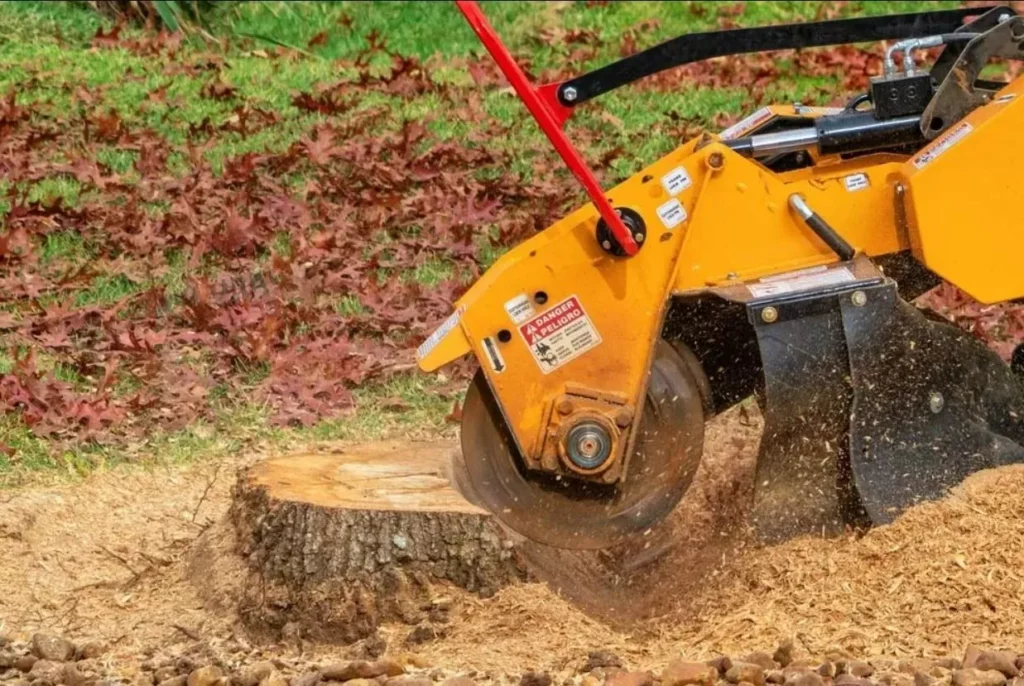
The Importance of Tree Stump Grinding
Removing tree stumps is vital for various reasons. Firstly, stumps left untreated can become a tripping hazard, especially when they are hidden beneath grass or foliage. Imagine walking through your backyard, enjoying the serene environment, when suddenly, your foot catches on an unsuspecting stump. Ouch! By removing these stumps through grinding, you can ensure a safer outdoor space for yourself, your family, and your guests.
Additionally, stumps may serve as a breeding ground for pests, such as termites or carpenter ants, which can spread to surrounding healthy trees. These pesky critters can wreak havoc on your beautiful landscape, causing damage that can be both costly and time-consuming to repair. By grinding the stumps, you eliminate their cozy habitat, discouraging these unwanted visitors from making themselves at home in your yard.
Furthermore, removing stumps eliminates the risk of new shoots sprouting from the stump and disturbing nearby structures, like sidewalks or foundations. Imagine the frustration of having to constantly trim and prune these persistent sprouts, only for them to keep coming back. By grinding the stumps, you effectively put an end to this cycle, allowing you to enjoy a more aesthetically pleasing and hassle-free outdoor space.
See Also: Essential things you need to know about buyers agents
Necessary Equipment for Stump Grinding
To successfully grind large tree stumps, specific equipment and tools are required. The primary machine used is a stump grinder, which is available in various sizes and configurations. These powerful machines are designed to tackle stumps of different sizes and hardness levels, ensuring efficient and effective removal. With their sharp teeth and hydraulic system, stump grinders can effortlessly break down even the most stubborn stumps.
However, it’s not just the stump grinder that plays a crucial role in the process. Protective gear is also essential to ensure operator safety during the grinding process. Goggles protect the eyes from flying wood chips, gloves provide a barrier against potential injuries, and sturdy boots offer stability and protection. By wearing the appropriate protective gear, operators can confidently and safely operate the stump grinder, making the removal process a breeze. To get more about skills and knowledge required to operate motorised stump grinding machines to safely remove tree stumps visit https://training.gov.au/Training/Details/AHCARB212.
Preparing for the Grinding Process
Before beginning the stump grinding process, it is crucial to take certain factors into consideration to ensure a smooth and safe operation. Proper preparation can make a significant difference in the efficiency and success of the task at hand.
One important aspect to consider is the location of the tree stump. Stumps located near structures, underground utilities, or delicate landscaping may require extra care and precision during the grinding process to avoid any damage. Additionally, assessing the accessibility of the stump and the surrounding area can help determine the best approach for bringing in the necessary equipment.
Safety Measures to Consider
Safety should always be the utmost priority when undertaking any tree stump grinding project. Before starting, ensure that the area is clear of any obstacles, such as rocks or debris, that may damage the machine or pose a safety risk. Adequate personal protective equipment (PPE), including eye and ear protection, should be worn throughout the grinding process. It is also vital to inform bystanders and keep them at a safe distance to prevent any accidents.
Furthermore, checking for any underground utilities, such as gas, water, or electrical lines, is essential to avoid potential hazards. Using a utility locator or contacting the local utility companies can help identify any buried lines and prevent accidental damage during the grinding process.
Assessing the Size and Type of Tree Stump
Prior to grinding a tree stump, it is important to evaluate its size and type to determine the most appropriate grinding technique. Large stumps may require more powerful equipment and additional time to ensure complete removal. Different tree species also influence the grinding process, as some woods are denser and harder to grind than others. By considering these factors, operators can better plan their approach and achieve optimal results.
Moreover, examining the age and condition of the tree stump can provide valuable insights into its hardness and decay level. Older stumps or those that have been decaying for a longer period may be easier to grind compared to freshly cut ones. Understanding the composition of the stump can help in selecting the right grinding tools and techniques for efficient removal.
Step-by-Step Guide to Grinding a Tree Stump
Now that you are familiar with the basics and have made the necessary preparations, we will guide you through the process of grinding a tree stump.
Tree stumps can be a stubborn reminder of a tree that once stood tall in your yard. Removing them can be a challenging task, but with the right tools and techniques, it can be done efficiently.
Initial Steps in the Grinding Process
Start by carefully inspecting the stump and its surroundings, ensuring there are no hidden obstacles or underground utilities that may interfere with the grinding process. Clear away any rocks, roots, or debris that could damage the cutting wheel. Next, position the stump grinder in front of the stump, allowing enough space for the wheel to move freely. Once in place, activate the grinder and slowly lower the cutting wheel onto the stump, beginning the grinding process.
It’s important to wear appropriate safety gear, including goggles, gloves, and ear protection, during the stump grinding process. The cutting wheel can kick up debris, so taking necessary precautions is vital to prevent any injuries.
Grinding Techniques for Large Stumps
When dealing with large tree stumps, it is essential to adopt effective grinding techniques to achieve optimal results. Start by working the outer edges of the stump and gradually move towards the center. This approach prevents the cutting wheel from becoming overwhelmed and ensures a smoother operation. Take breaks periodically to remove excess wood chips and adjust the depth and angle of the cutting wheel as needed. Repeat the process until the stump is ground down to your desired level.
For particularly large stumps, consider using a chainsaw to cut the stump as close to the ground as possible before using the stump grinder. This can make the grinding process more manageable and efficient, saving you time and effort in the long run.
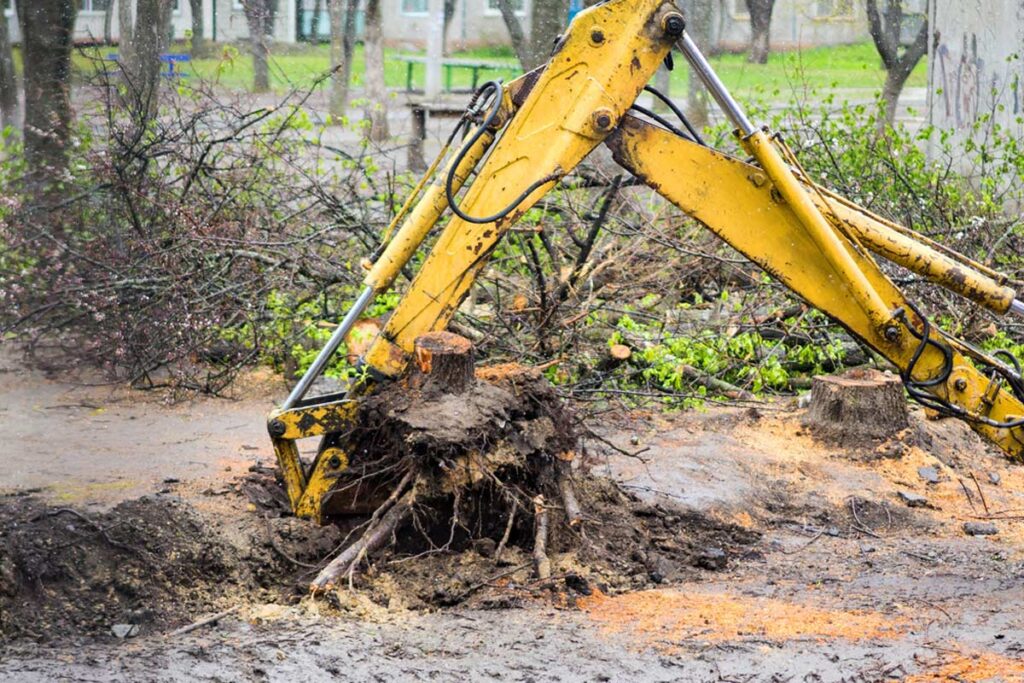
Post-Grinding Procedures
Once the grinding process is complete, there are certain procedures you should follow to finish off the job properly.
Dealing with the Remaining Wood Chips
After grinding the tree stump, you will be left with a mound of wood chips. These chips can be repurposed as mulch or used as organic material for composting. Spread the chips evenly around your garden or store them for later use. If desired, you can also remove the majority of the chips and fill the resulting hole with topsoil to restore the ground area to its original state.
Repurposing wood chips as mulch can provide numerous benefits to your garden. As the mulch decomposes, it enriches the soil with essential nutrients, improves moisture retention, and helps suppress weed growth. Additionally, the mulch acts as a natural insulator, protecting plant roots from extreme temperatures during both summer and winter.
Restoration of the Ground Area
To restore the ground area, level off the remaining wood chips and cover them with a layer of topsoil. This will help foster healthy grass growth and prevent the formation of hazardous depressions in the soil. Apply grass seed or lay down sod to restore the area completely, ensuring a seamless transition between the surrounding landscape and the recently ground stump area.
When restoring the ground area, consider incorporating a layer of organic matter such as compost into the topsoil. This enriches the soil with vital nutrients and promotes beneficial microbial activity, creating a fertile environment for new plant growth. Additionally, aerating the soil before laying down grass seed or sod can improve root penetration and overall lawn health, leading to a lush and vibrant landscape.
Potential Challenges in Grinding Large Tree Stumps
While stump grinding is generally a straightforward process, there are some challenges that may arise, particularly when dealing with large tree stumps.
One common challenge is encountering rocks or foreign objects hidden beneath the stump or root system. These obstacles can damage the cutting wheel or cause the grinder to become stuck. To overcome this, carefully inspect the stump and remove any visible debris or rocks. Alternatively, consider using a stump grinder with additional features or attachments to handle these conditions more effectively.
Another challenge that may arise when grinding large tree stumps is dealing with the sheer size and weight of the stump itself. These stumps can be massive, making it difficult to maneuver the grinder and achieve a smooth, even grind. In such cases, it may be necessary to use heavy machinery or enlist the help of multiple individuals to safely and efficiently complete the task.
When to Seek Professional Help
Grinding large tree stumps can be a demanding task that requires specialized knowledge and equipment. If you feel unsure or lack the experience to tackle such a project, it is best to seek professional assistance. Tree service experts have the necessary expertise and equipment to safely and efficiently grind large tree stumps, saving you time, effort, and potential frustrations.
Furthermore, professionals have the advantage of experience, enabling them to anticipate and overcome any unexpected challenges that may arise during the grinding process. They are equipped with the latest tools and techniques to handle even the most stubborn stumps, ensuring a thorough and effective job.
By understanding the process of grinding large tree stumps, being aware of the necessary equipment, taking proper precautions, and following the step-by-step guide, you can successfully rid your property of these unsightly remnants. However, it is important to remember that every situation is unique, and some stumps may require more expertise and resources than others. Therefore, it is crucial to consider your own abilities and be cautious when dealing with larger stumps or unforeseen obstacles. With the right approach, you can transform your landscape and restore unencumbered beauty to your surroundings.
Related: How to Grind a Stump with DIY vs. Professional Services

